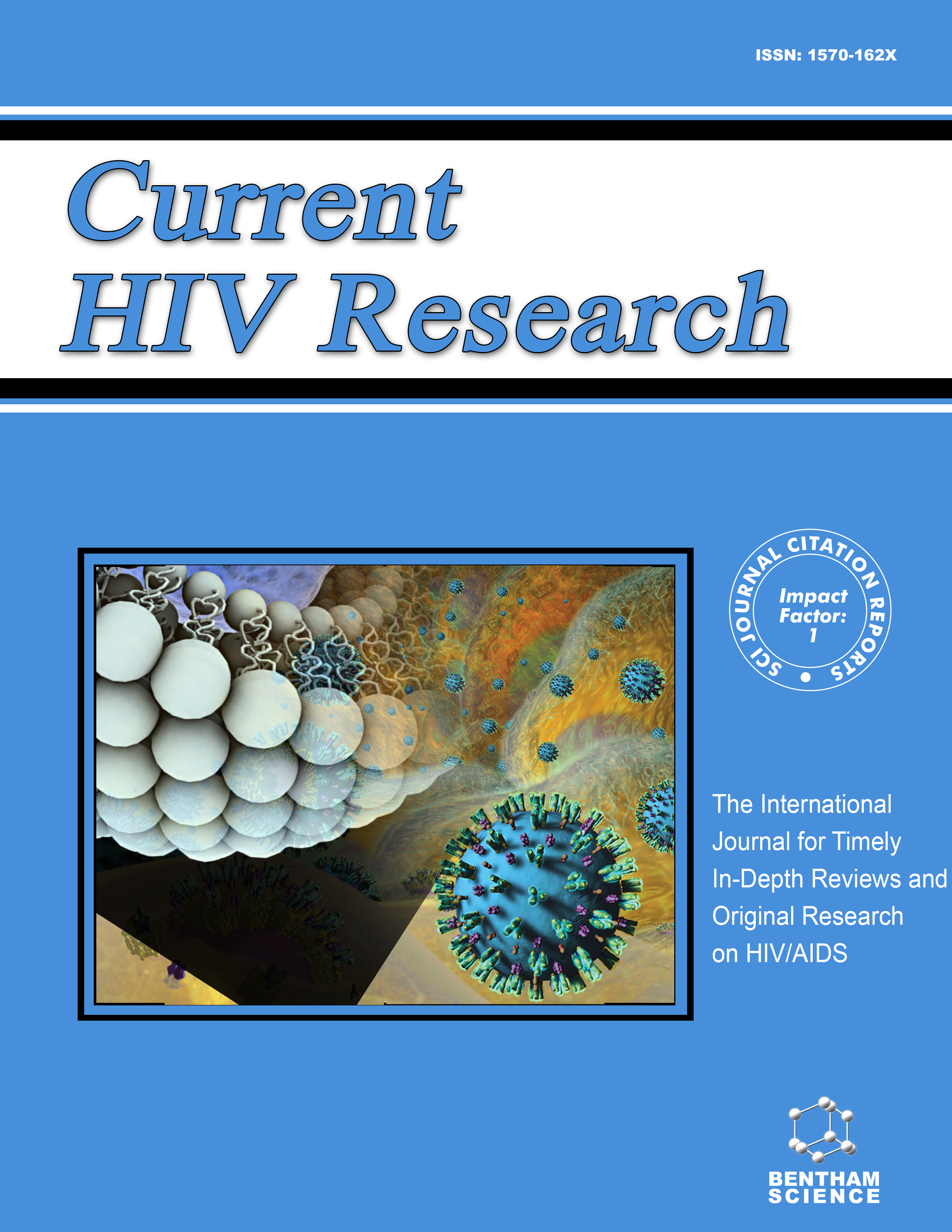- Home
- A-Z Publications
- Current HIV Research
- Previous Issues
- Volume 12, Issue 6, 2014
Current HIV Research - Volume 12, Issue 6, 2014
Volume 12, Issue 6, 2014
-
-
Creatine Protects Against Mitochondrial Dysfunction Associated with HIV-1 Tat-Induced Neuronal Injury
More LessAuthors: Patrick R. Stevens, Jeremy W. Gawryluk, Liang Hui, Xuesong Chen and Jonathan D. GeigerHIV-1 infected individuals live longer but experience a prevalence rate of over 50% for HIV-1 associated neurocognitive disorders (HAND) for which no effective treatment is available. Viral and cellular factors secreted by HIV-1 infected cells lead to neuronal injury and HIV-1 Tat continues to be implicated in the pathogenesis of HAND. Here we tested the hypothesis that creatine protected against HIV-1 Tat-induced neuronal injur Read More
-
-
-
Estrous Cycle and HIV-1 Tat Protein Influence Cocaine-Conditioned Place Preference and Induced Locomotion of Female Mice
More LessAuthors: Jason J. Paris, Jason Fenwick and Jay P. McLaughlinThe HIV-1 trans-activator of transcription (Tat) protein, interacts with psychostimulants to potentiate cocaine-reward in rodents. Sex steroids may protect against Tat-induced deficits. Female GT-tg transgenic mice conditionally-expressed Tat protein targeted to brain via a doxycycline-dependent, GFAP-linked promoter. Mice were tested for cocaine-conditioned place preference (CPP) and cocaine-induced locomotion wh Read More
-
-
-
HIV-1 Subtypes B and C Tat Differentially Impact Synaptic Plasticity Expression and Implicates HIV-Associated Neurocognitive Disorders§
More LessEarlier studies have established that infection with HIV-1 subtypes (clades) might differentially influence the neuropathogenesis of HIV-1-associated neurocognitive dysfunction (HAND). HIV-1 Trans activator of transcription protein (Tat) is of considerable significance and plays a major role in the central nervous system (CNS) dysfunction. However, these HIV-1 clades exert diverse cellular effects that leads to neuropathogenic dysf Read More
-
-
-
HIV-1 Tat-Induced Changes in Synaptically-Driven Network Activity Adapt During Prolonged Exposure
More LessAuthors: Kelly A. Krogh, Matthew V. Green and Stanley A. ThayerHIV-associated neurocognitive disorders (HAND) afflict approximately half of HIVinfected patients. The HIV-1 transactivator of transcription (Tat) protein is released by infected cells and contributes to the pathogenesis of HAND, but many of the underlying mechanisms remain poorly understood. Here we used fura-2-based Ca2+ imaging and whole-cell patch-clamp recording to study the effects of Tat on the spontane Read More
-
-
-
HIV-1 Tat Protein Exposure Potentiates Ethanol Reward and Reinstates Extinguished Ethanol-Conditioned Place Preference
More LessAuthors: Jay P. McLaughlin, Michelle L. Ganno, Shainnel O. Eans, Elisa Mizrachi and Jason J. ParisExposure to HIV-1 trans-activator of transcription (Tat) protein potentiates the psychostimulant effects of cocaine, but the functional consequences of the interaction between HIV-1 Tat and other abused drugs is poorly understood. We hypothesized that exposure to HIV-1 Tat would potentiate the rewarding effects of ethanol. GT-tg transgenic mice, where Tat protein is conditionally expressed in brain by a doxycycline-dependent GF Read More
-
-
-
Opiate Addiction Therapies and HIV-1 Tat: Interactive Effects on Glial [Ca2+]i, Oxyradical and Neuroinflammatory Chemokine Production and Correlative Neurotoxicity
More LessFew preclinical studies have compared the relative therapeutic efficacy of medications used to treat opiate addiction in relation to neuroAIDS. Here we compare the ability of methadone and buprenorphine, and the prototypic opiate morphine, to potentiate the neurotoxic and proinflammatory ([Ca2+]i, ROS, H2O2, chemokines) effects of HIV-1 Tat in neuronal and/or mixedglial co-cultures. Repeated observations of neurons duri Read More
-
Volumes & issues
-
Volume 23 (2025)
-
Volume 22 (2024)
-
Volume 21 (2023)
-
Volume 20 (2022)
-
Volume 19 (2021)
-
Volume 18 (2020)
-
Volume 17 (2019)
-
Volume 16 (2018)
-
Volume 15 (2017)
-
Volume 14 (2016)
-
Volume 13 (2015)
-
Volume 12 (2014)
-
Volume 11 (2013)
-
Volume 10 (2012)
-
Volume 9 (2011)
-
Volume 8 (2010)
-
Volume 7 (2009)
-
Volume 6 (2008)
-
Volume 5 (2007)
-
Volume 4 (2006)
-
Volume 3 (2005)
-
Volume 2 (2004)
-
Volume 1 (2003)
Most Read This Month
Article
content/journals/chr
Journal
10
5
false
en


